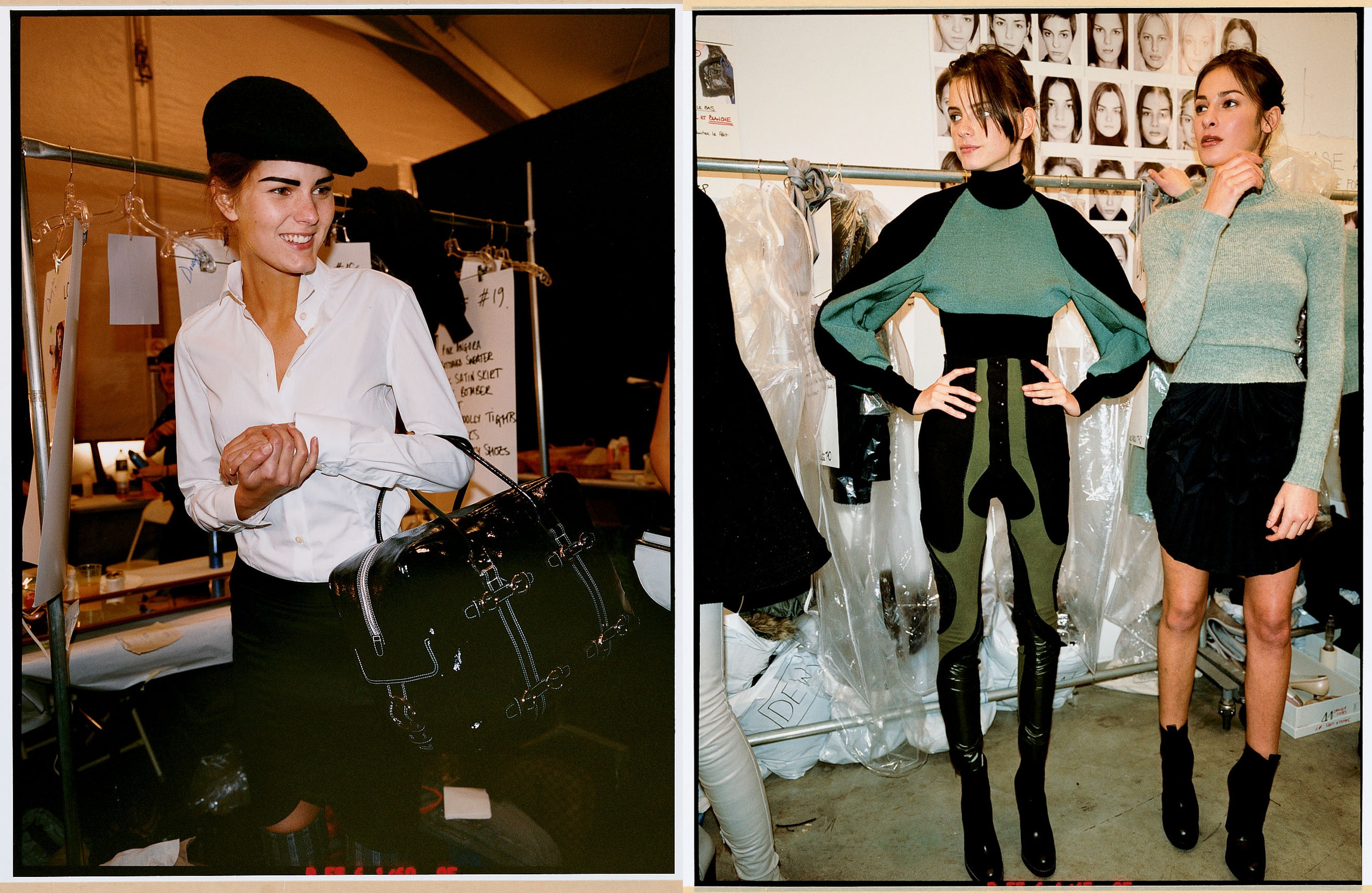They say that those who don’t know history are doomed to repeat it, but perhaps even worse are those who remember only the worst parts and exalt them. I’m not talking about world politics—though surely it would also apply—but about the three-letter acronym currently haunting Instagram and the pop-culture landscape more broadly: Y2K.
We know fashion is cyclical, but I don’t know that I was quite prepared for the parts of the aughts that have been chosen for a comeback. There were rumors of low-rise jeans making a return—not a problem, let the youth make their own mistakes! But that was only a half-true premonition; in late 2021, when Miuccia Prada’s now iconic Miu Miu spring 2022 show took place—with its lower-than-low-rise miniskirts that evoked the magical time (2002) when Christina Aguilera released “Dirrty” and started going by Xtina in an attempt to shed her Disney-princess persona—something shifted.
I immediately loved it because it was a little twisted. Yes, the rises were barely there, but instead of exposing a thong (as they would’ve in the aughts), they exposed boyish underwear emblazoned with the Miu Miu logo; the cutoff miniskirt with exposed pockets was paired with a cutoff button-down shirt worn underneath a cutoff knit sweater—like someone went mad with the scissors. It was cheeky, and it was new, and there was a layer of Miuccia-ness when I remembered the actual Miu Miu collections of the era, which were full of prim and proper knee-length skirts and turtlenecks (spring 2000), romantic gauzy dresses and tailored separates (fall 2001), and even paisley-print circle skirts and frontier cotton dresses (spring 2002). It’s not that the early-aughts Miu Miu girl was afraid to show skin; it’s just that she seemed to intellectualize doing so.
I also understood that it signaled that the aughts would now be reduced and defined by a few immediately identifiable traits. (This happens over and over: It wasn’t all flapper dresses in the 1920s, and the ’70s weren’t just about bell-bottoms and peace signs.) From the early ’00s, we’ve also seen the return of skirts over pants, Uggs, Juicy Couture sweatsuits, and ruffled slip dresses. As generations grow up they bring their icons along with them, and Gen Z especially has a penchant for reclaiming and redefining previous signifiers of bad taste—a healthy part of the fashion cycle!—so it’s not exactly surprising that they’ve zeroed in on this specific moment in time (Beverly Hills in the year 2006).
Despite there being no Instagram or Twitter in the early 2000s, our vision of the era is now being shaped by those very platforms—what gets the most likes, which in itself is often defined by what’s the most ironic, what’s the new “so bad it’s good.” This is of course tied to celebrity—we can’t forget that the 2000s saw the rise of the celebrity as style icon, even in the pages of Vogue. But while these trends do reflect the things that some people wore in the first decade of the 21st century, they barely scratch the surface of the vast fashion landscape of those years.
We know what the celebs were wearing at the time—what about the cool girls? Here’s what I remember: the Marc by Marc Jacobs collections; acid-striped jeans, graffiti-print sweatshirts, band-style denim jackets, and a steady stream of perfect ballet flats—pointy toe, almond toe, or round toe—that were absolute must-haves. They were clothes for misfits, and the proof was in the ad campaigns that featured the likes of Pavement’s Stephen Malkmus and Sonic Youth’s Kim Gordon, and hazy portraits of cooler-than-cool models of the era like Delfine Bafort, Tasha Tilberg, and Anouck Lepère. (Some of them have also recently returned to the runway—Bafort was recently spotted at Sacai’s fall ’23 show and The Row’s resort ’23 collection, and Tilberg was a constant presence last season, showing up in New York at Peter Do and in Milan at Trussardi, among others.)
I remember Suzanne Clements and Inacio Ribeiro, who were the masters of a feminine aesthetic that carried a punk edge at their namesake label Clements Ribeiro and who brought that same vibe to Cacharel when they were named creative directors there, presenting a collection that made toile de Jouy and mismatched floral prints an essential way of dressing. I remember Veronique Branquinho, the Belgian designer whose clothes were pragmatic and imbued with a certain dark romanticism; Nicolas Ghesquière, when he was making low-slung cargo pants as well as shaggy vests and sweaters from oversized yarn—clothes that were wearable but never boring; and Phoebe Philo’s sweet-but-not-saccharine dresses at Chloé, paired with wood-platform patent-leather Mary Janes. It was the decade of Luella Bartley, who founded her namesake label in 1999 when she was 25 years old and instantly became the patron saint of interesting girls. (Her spring 2008 collection, inspired by Ghost World, remains one of her best, and still to this day, wherever she goes, I follow.)
The aughts were a good time for excellently tailored jeans and trousers (sometimes skinny and sometimes with a bootleg from which glorious pointy shoes emerged) and for Victorian-inspired jackets with a slight puff at the shoulders and hook-and-eye closures. It’s true that my recounting of the decade is selective—it was also the decade of sandal-boots (ugh). But mostly I remember it as a time when designers didn’t need to be everything to everyone, when fashion wasn’t the numbers game that it is now, and there was room for the weird, the intellectual, the alternative. There was room for nuance and different points of view—that’s something that we can all agree is ripe for a comeback.

